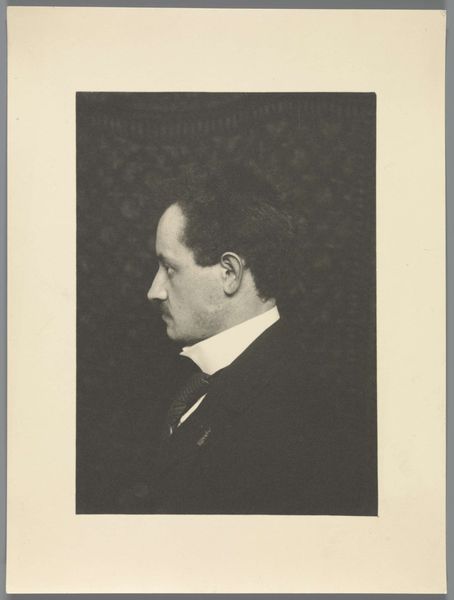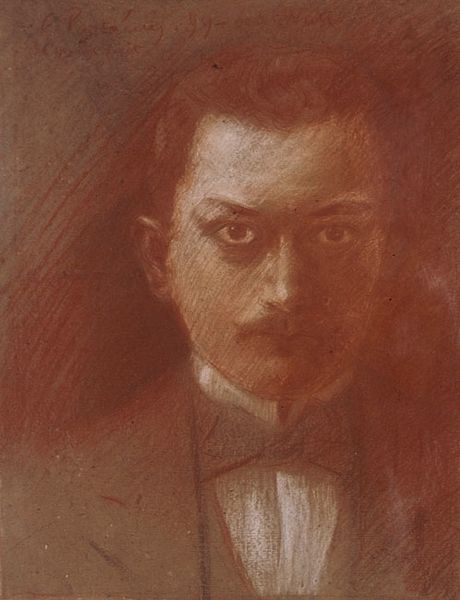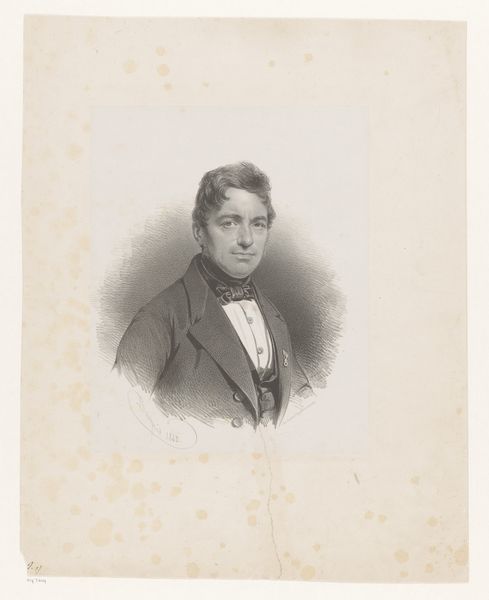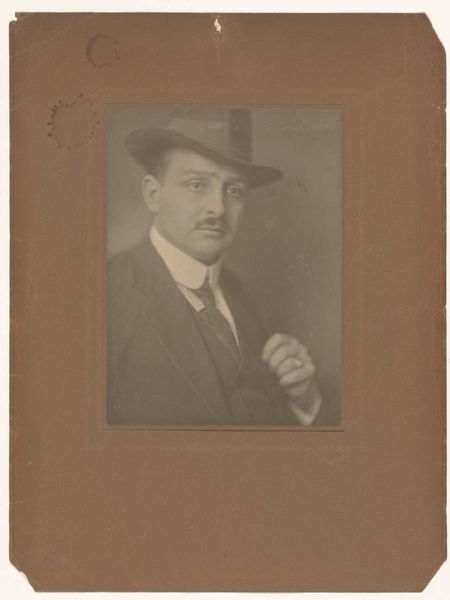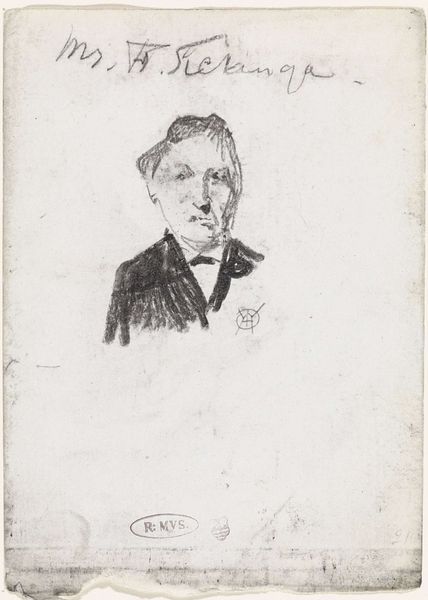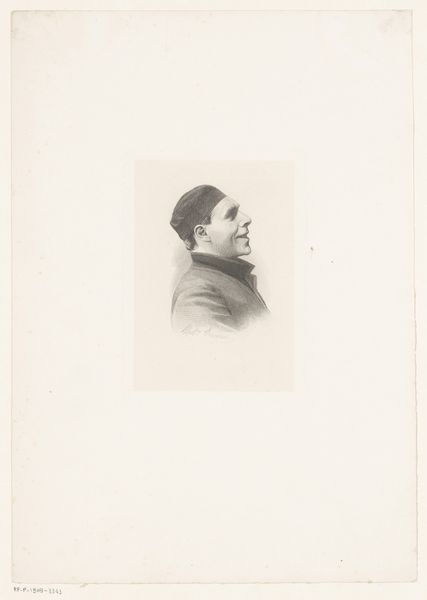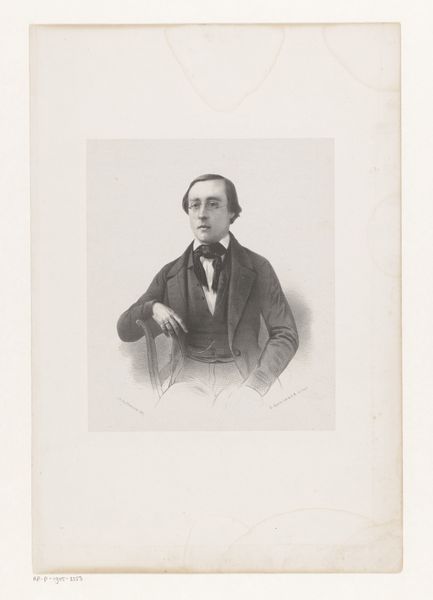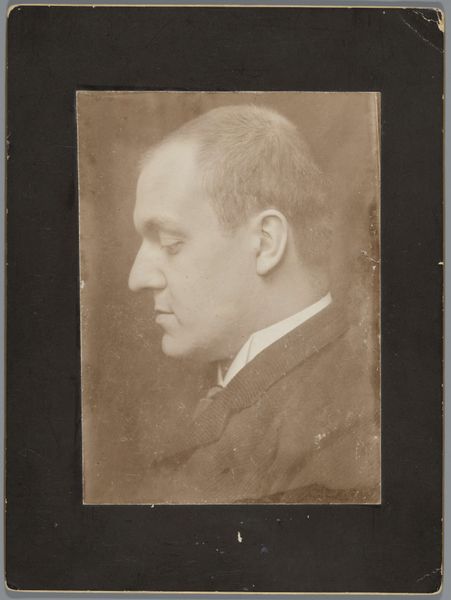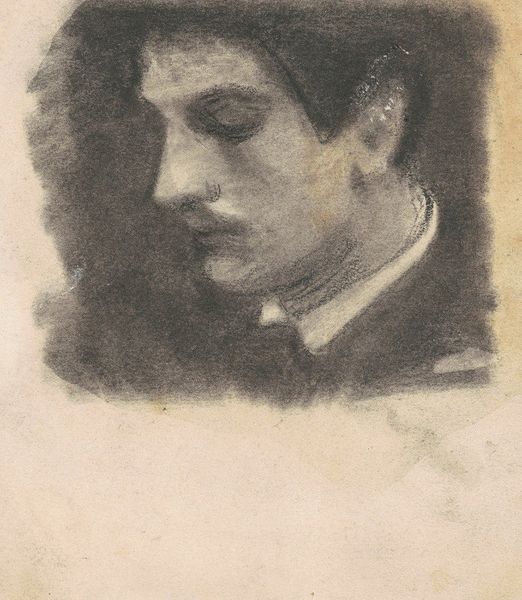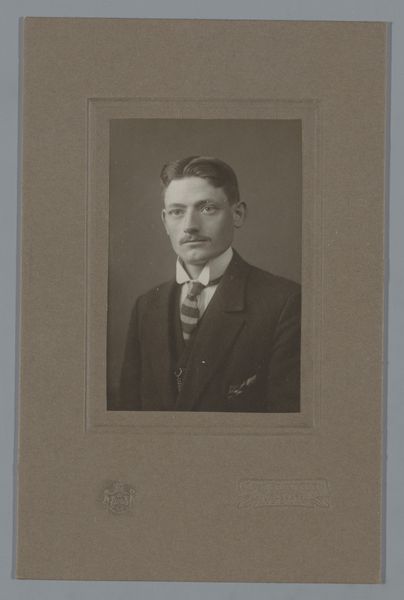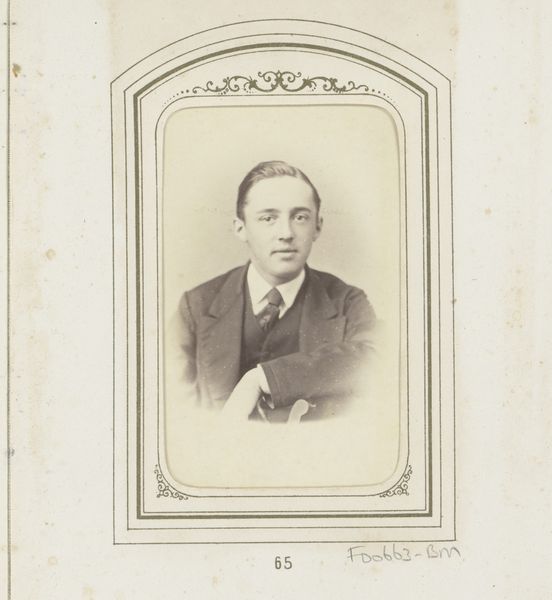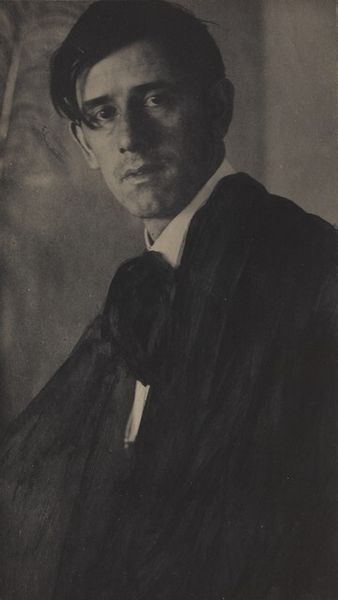
Reproductie naar een foto, schilderij, tekening of prent c. 1860 - 1915
0:00
0:00
drawing, pencil
#
portrait
#
drawing
#
charcoal drawing
#
portrait reference
#
pencil drawing
#
pencil
#
portrait drawing
#
academic-art
#
portrait art
#
watercolor
#
realism
Dimensions: height 161 mm, width 121 mm, height 217 mm, width 167 mm, thickness 1 mm
Copyright: Rijks Museum: Open Domain
Curator: This drawing, titled "Reproductie naar een foto, schilderij, tekening of prent," which roughly translates to “Reproduction of a photo, painting, drawing or print”, dates back to somewhere between 1860 and 1915. It's unsigned, attributed to diverse makers, rendered in pencil and charcoal. What’s your immediate take? Editor: Brooding. Intense. The limited palette forces you to focus on the contours of his face, the way the light catches his brow. He seems caught in a moment of deep thought, doesn’t he? Curator: He does, and considering the title, it sparks an interesting thought. This is not an original but an echo, a copy of something already filtered. Does that change how we read the intensity you perceived? Is it genuine, or a performance twice removed? Editor: Absolutely. The very act of reproduction implies a power dynamic. Who chose to represent this man, and why? Is he elevated or diminished through this process of replication and circulation? Also, who copied who? I find myself wanting to deconstruct what the work tells us about the dynamics within artistic hierarchies of that time period. Was he important enough to merit the time involved? Curator: Or was this part of an artistic training exercise? There's a delicate, almost tentative quality to the lines. Maybe a student carefully tracing a photographic portrait as an exercise in mastering light and shadow. The lack of strong individuation gives the drawing an interesting, almost haunting quality. As you say, a powerful reminder of all that it hides. Editor: It's the absence that speaks, isn't it? Absence of context, of the original artwork it’s copying, the absence of a singular artistic voice. These absences become palpable presences, demanding we fill in the gaps with our own interpretations and our own questioning. It compels us to think about art and representation, which is not about the real. Curator: Indeed, and as it holds us here thinking of its possible inspiration and reasons, it gains more of its own substance. A quiet resistance perhaps, to the very thing that created it? It is, finally, itself. Editor: That's a lovely thought to close on. From a copy, to its own creation, an evolution we as the viewers enable.
Comments
No comments
Be the first to comment and join the conversation on the ultimate creative platform.
